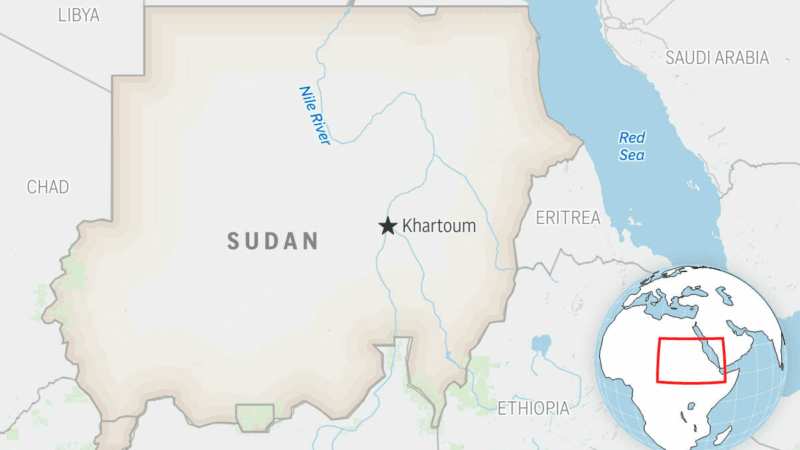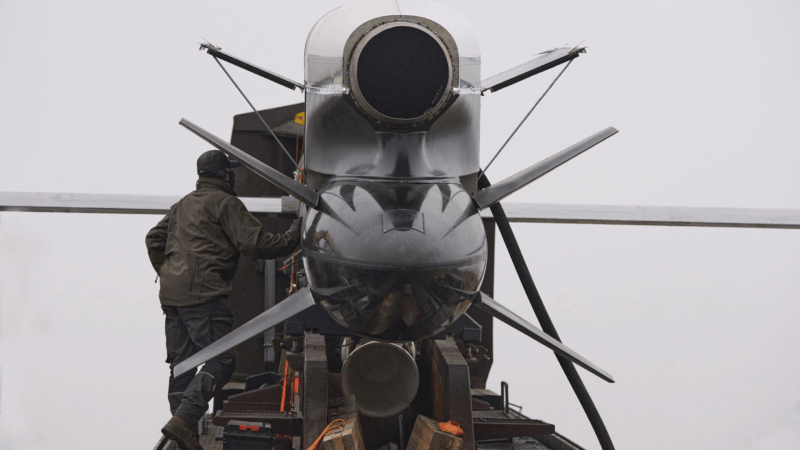‘No more floppy disks’: Air traffic control overhaul faces some daunting obstacles
WASHINGTON — This week, the head of the Federal Aviation Administration laid out an ambitious goal of bringing the U.S. air traffic control system into the 21st century.
“The whole idea is to replace the system,” acting FAA administrator Chris Rocheleau explained to the House Appropriations Committee during a hearing on Wednesday. “No more floppy disks or paper strips.”
It’s a goal that has eluded all of Rocheleau’s predecessors. Walking into many of the nation’s air traffic control towers is like stepping back in time. Technology from the 20th century is still very much in use today — including, yes, floppy disks, paper flight strips, and computers running Windows 95.
More than a third of the nation’s air traffic control systems are unsustainable, according to an FAA assessment from 2023, and some are starting to fail.
The fragile state of the system became glaringly obvious during the recent radar and communication outages that led to hundreds of delays and cancellations at Newark Liberty International Airport in New Jersey.
“This is the most important infrastructure project that we’ve had in this country for decades,” Transportation Secretary Sean Duffy said during a press conference at the Newark airport on Monday. “Everyone agrees, this is non-partisan. Everyone knows we have to do it.”
Duffy wants a brand new air traffic control system, and he has broad backing across the aviation industry: from the union that represents air traffic controllers, to trade groups for airlines and manufacturers. They’ve all signed on to a coalition called Modern Skies, which produced a TV ad leaning heavily on 1980s nostalgia with portable cassette players and leg warmers.
“That was then,” the narrator says. “But four decades later, floppy disks are still being used to run our air traffic control system.
It’s easy to joke about outdated equipment. But it will be a lot harder to make up for decades of underinvestment and failed attempts to modernize the system.
“At its core, it’s a money problem,” said Michael Huerta, a former FAA administrator under President Obama. Huerta also chaired a safety review team that looked at the air traffic control system and reported its findings to the FAA two years ago.

“The FAA has been asked to do more with less, essentially,” Huerta said in an interview.
The Trump administration has not said how much a brand new air traffic system will cost. Secretary Duffy estimates the price tag is in the tens of billions of dollars, and is aiming to complete it within four years.
The Transportation Department is asking private companies for their ideas on how to pull that off. This week, the FAA put out a Request For Information from an “integrator” that could take the lead in building the new system, and it’s inviting companies to pitch their “the best and brightest ideas and new technologies” in a series of so-called “Industry Days” next week.
“It’s an extraordinarily ambitious plan,” said David Grizzle, a former chief operating officer of the FAA who also participated in the safety review team. He’s encouraged to see that the Trump administration is looking outside of government for help.
But he also sees some possible obstacles. The FAA has spent a lot of money on upgrades before, Grizzle says. But it hasn’t always seen a big payoff.
“The FAA has not been allowed to shut down old ancient equipment,” Grizzle said. “So as a result of that, even the money that they have for equipment, more than 90% goes to fund old equipment.”
There are other potential roadblocks, too.
One big question is what to do about the 21 air traffic control facilities that manage high-altitude traffic. Many of them are old and falling apart. The DOT has proposed building only 6 new ones, leaving unclear exactly what would happen to the others, while suggesting that the FAA might want to “consolidate” these facilities to save money.
“I think that consolidation is something that needs to be part of this plan,” agrees Huerta. “Everyone who is familiar with the air traffic system recognizes that we probably don’t need the number of facilities which were built at a time when technology was very different, that we can get by with a smaller number.”
But the politics around consolidation will likely be brutal, Huerta concedes, as members of Congress jostle to protect facilities in their own districts. And many in the industry say they’re skeptical about the Trump administration’s aggressive timetable.
“There’s no way that they can complete all of that within four years,” Grizzle said. “But if they could merely start in each of the elements and get a running start, that would be tremendous.”
Transcript:
MARY LOUISE KELLY, HOST:
The fragile state of the U.S. air traffic control system became glaringly obvious during a series of recent outages affecting passenger jets operating around the airport in Newark, New Jersey. Now, the transportation secretary is pushing Congress to allocate tens of billions of dollars for a brand-new air traffic control system. Cost is just one of the obstacles, as NPR’s Joel Rose reports.
JOEL ROSE, BYLINE: Walking into many of the nation’s air traffic control towers is like stepping back in time.
(SOUNDBITE OF ARCHIVED RECORDING)
UNIDENTIFIED PERSON #1: The information was put on flight progress strips that indicate the flight number, route, altitude.
ROSE: This newsreel from the 1960s shows how air traffic controllers used paper flight strips to keep track of planes.
(SOUNDBITE OF ARCHIVED RECORDING)
UNIDENTIFIED PERSON #1: These strips were distributed to all controllers in the Chicago center who would be controlling the flight.
ROSE: More than half a century later, air traffic controllers across the U.S. are still using paper strips. Many computer and telecom systems date back to the 1980s and ’90s, depending on floppy disks and computers running on Windows 95. The Federal Aviation Administration found in 2023 that more than a third of the nation’s air traffic control systems are unsustainable. And some are starting to fail, as we saw during the recent radar and communication outages that led to hundreds of delays and cancellations at Newark Liberty International Airport.
(SOUNDBITE OF ARCHIVED RECORDING)
SEAN DUFFY: This is the most important infrastructure project that we’ve had in this country for decades. Everyone agrees. This is nonpartisan. Everyone knows we have to do it.
ROSE: Transportation Secretary Sean Duffy wants a brand-new air traffic control system, and he has broad backing across the aviation industry, from the union that represents air traffic controllers to trade groups for airlines and manufacturers. They’ve all signed on to a coalition called Modern Skies, which produced this TV ad, leaning heavily on 1980’s nostalgia, with leg warmers and portable cassette players.
(SOUNDBITE OF ARCHIVED RECORDING)
UNIDENTIFIED PERSON #2: That was then. But four decades later, floppy disks are still being used to run our air traffic control system.
ROSE: It’s easy to joke about outdated equipment, but it will be a lot harder to make up for decades of underinvestment and failed attempts to modernize the system. Michael Huerta is a former head of the FAA under President Obama. He also chaired a safety review team that looked at the air traffic control system two years ago.
MICHAEL HUETRA: At its core, it’s a money problem, where the FAA’s been asked to do more with less, essentially.
ROSE: The Trump administration has not said how much a brand-new air traffic system will cost, though Secretary Duffy estimates it’s in the tens of billions of dollars, and he’s aiming to complete it within four years. This week, the Transportation Department asked private companies for their ideas on how to pull that off.
DAVID GRIZZLE: It’s an extraordinarily ambitious plan.
ROSE: David Grizzle is a former chief operating officer at the FAA. He’s encouraged to see that the Trump administration is looking outside of government for help. But Grizzle also sees some possible obstacles. The FAA has spent a lot of money on upgrades before, Grizzle says, but it hasn’t always seen a big payoff.
GRIZZLE: The FAA has not been allowed to shut down old, ancient equipment. Even the money that they have for equipment, more than 90% goes to fund old equipment.
ROSE: There are other potential roadblocks, too. A big question is what to do about the air traffic control facilities that manage high altitude traffic. Currently, there are 21 of them, many old and falling apart. The DOT has proposed building only six new ones, leaving it unclear what would happen to the others. Former FAA administrator Michael Huerta says consolidation makes a lot of sense.
HUETRA: We probably don’t need the number of facilities which were built at a time when technology was very different. We can get by with a smaller number.
ROSE: Though, Huerta says, the politics of consolidation will be brutal. For now, the industry is focused on the first obstacle – finding enough money to bring the air traffic control system into the 21st century.
Joel Rose, NPR News, Washington.
‘The Abandons’ is a sudsy soap opera dressed up in spurs and a cowboy hat
On the surface it's a gorgeous, hardscrabble Western, awash in stark landscapes, grubby faces, bar fights and banditry. But scratch away the grime, and you expose the pure, glitzy soap opera beneath.
Sudanese paramilitary drone attack kills 50, including 33 children, doctor group says
Thursday's attack is the latest in the fighting between the paramilitary group, the Rapid Support Forces, also known as the RSF, and the Sudanese military, who have been at war for over two years.
Russia unleashes drone and missile attack on Ukraine as diplomatic talks continue
Russia unleashed a major missile and drone barrage on Ukraine overnight into Saturday, after U.S. and Ukrainian officials said they'll meet on Saturday for talks aimed at ending the war.
West Virginians question National Guard deployments after attack on 2 of their own
Army Specialist Sarah Beckstrom was fatally shot in Washington, D.C., while Air Force Staff Sergeant Andrew Wolfe was seriously wounded. Trump says the deployments are necessary to fight crime, but others disagree.
Takeaways from the latest special election and what it means for control of the House
There was yet another sign this week of a potential 2026 wave that could hand control of the House of Representatives to Democrats.
Trump official signals potential rollback of changes to census racial categories
Trump officials are reviewing changes to racial and ethnic categories that the Biden administration approved for the 2030 census and other federal government forms, a White House agency official says.






